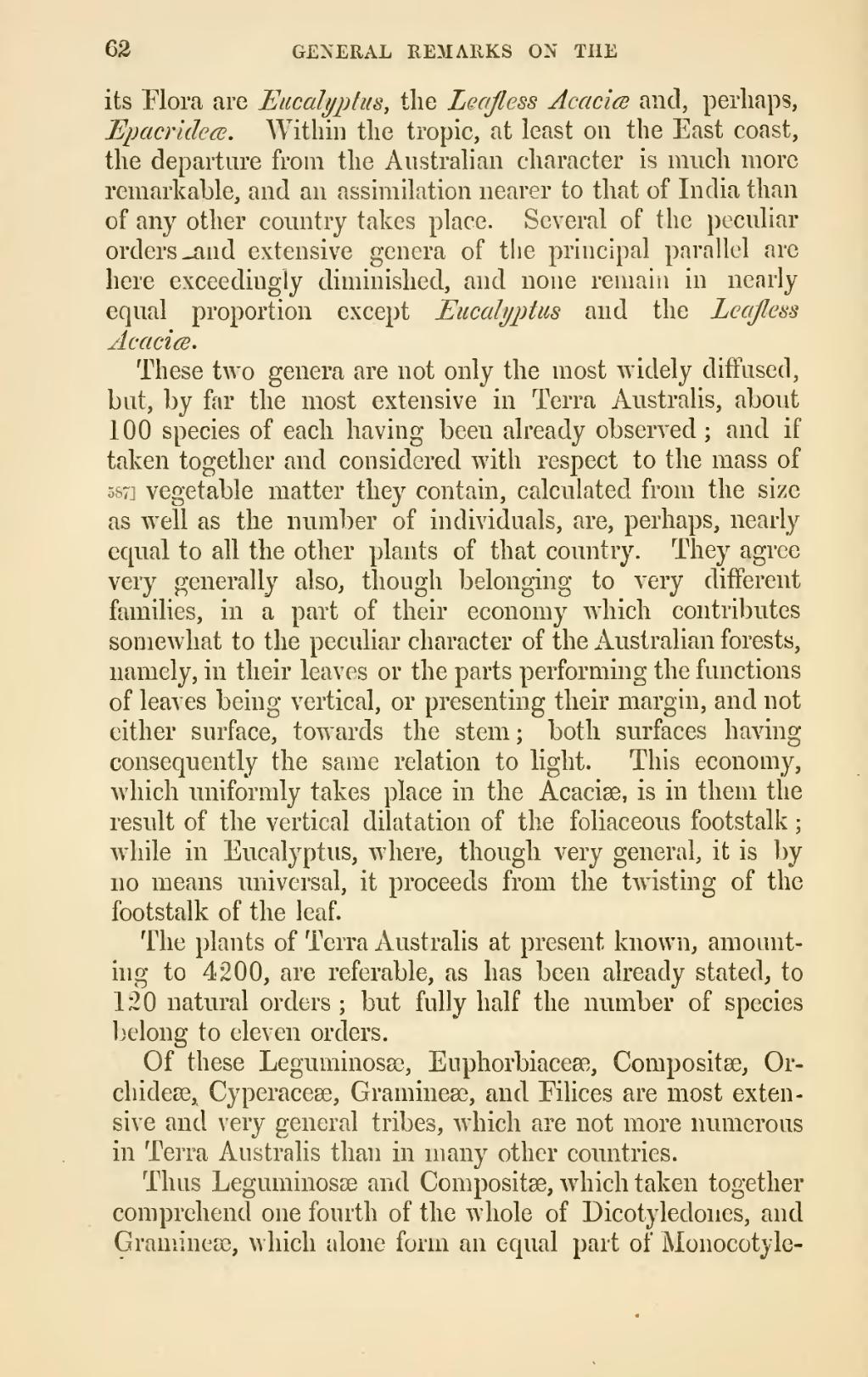its Flora are Eucalyptus, the Leafless Acaciæ and, perhaps, Epacrideæ. Within the tropic, at least on the East coast, the departure from the Australian character is much more remarkable, and an assimilation nearer to that of India than of any other country takes place. Several of the peculiar orders and extensive genera of the principal parallel are here exceedingly diminished, and none remain in nearly equal proportion except Eucalyptus and the Leafless Acaciæ.
These two genera are not only the most widely diffused, but, by far the most extensive in Terra Australis, about 100 species of each having been already observed; and if taken together and considered with respect to the mass of 587] vegetable matter they contain, calculated from the size as well as the number of individuals, are, perhaps, nearly equal to all the other plants of that country. They agree very generally also, though belonging to very different families, in a part of their economy which contributes somewhat to the peculiar character of the Australian forests, namely, in their leaves or the parts performing the functions of leaves being vertical, or presenting their margin, and not either surface, towards the stem; both surfaces having consequently the same relation to light. This economy, which uniformly takes place in the Acaciæ, is in them the result of the vertical dilatation of the foliaceous footstalk; while in Eucalyptus, where, though very general, it is by no means universal, it proceeds from the twisting of the footstalk of the leaf.
The plants of Terra Australis at present known, amounting to 4200, are referable, as has been already stated, to 120 natural orders; but fully half the number of species belong to eleven orders.
Of these Leguminosæ, Euphorbiaceæ, Compositæ, Orchideæ, Cyperaceæ, Gramineæ, and Filices are most extensive and very general tribes, which are not more numerous in Terra Australis than in many other countries.
Thus Leguminosæ and Compositæ, which taken together comprehend one fourth of the whole of Dicotyledones, and Gramineæ, which alone form an equal part of Monocotyle-
